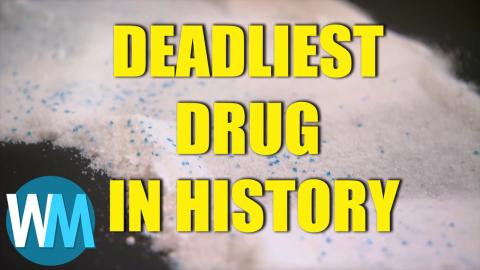Top 5 Things You Need to Know About the Opioid/Fentanyl Epidemic

This is the deadliest drug overdose crisis in history. From the basics, to the crisis, to the statistics, these are the need to know facts about the unprecendented crisis. WatchMojo counts down 5 things you need to know about the Opioid/Fentanyl Epidemic.
Special thanks to our user Strider Xanthos for suggesting this idea! Check out the voting page at http://WatchMojo.comsuggest/Top+10+Facts+About+The+United+States+Opioid+Crisis.
#5: What is an Opioid?
In order to understand the gravity of the situation, we first need to get a handle on what constitutes an opioid. Dating back to prehistoric times, people have harvested the latex from opium poppies for the sake of its euphoric and painkilling properties. Over the years, this natural product has been refined into a number of natural opioids, known as opiates, like morphine and codeine, and heroin. Opium has also inspired a wide range of synthetic and semi-synthetic opioids like oxycodone and fentanyl. Opioids go by many brand names like Percocet, Demerol, Vicodin and Oxycontin. Though opioids vary in terms of their intensity, they all share one thing in common - they’re incredibly addictive.
#4: How the Crisis Began
To be clear, the world has a long history of opioid addiction that far predates the creation of the word “addiction”. There was opium, then laudanum, then morphine, then heroin. In fact, as far back as 1911, Americans were already being called “the greatest drug fiends in the world” by their own government. But we’re now facing an epidemic of unprecedented proportions. Though the result of many factors, the surge in opioid addiction seems clearly linked withthe over-prescription of painkillers in the medical system. Given the highly addictive nature of opioids, many people find themselves incapable of getting off of them, and when the prescription runs out, they turn to illegal, often unsafe sources.
#3: The Fentanyl Factor
Arguably the biggest game changer has been the introduction of fentanyl. A highly concentrated substance, it has been used in the medical profession to treat pain in opium resistant individuals like palliative cancer patients, and as surgical anaesthetic. 50 to 100 times stronger than morphine, or 30 to 50 times stronger than heroin, it’s highly effective. For dealers, it’s a low cost way to deliver a strong high; for drug users, it’s a game of russian roulette. Unlike in a medical setting, street drugs are typically cut by the batch. When fentanyl is added to the mix, you wind up with inconsistent dosing. Unfortunately, with fentanyl, a few extra grains can be a deadly difference.
#2: It's Been Called A "Nationwide Public Health Emergency" in the U.S.
The thing is… fentanyl isn’t just in heroin. It’s found its way into most opioids, and to make matters worse, has increasingly been identified in non-opioids drugs like MDMA and cocaine. With many individuals addicted to painkillers, and even more at risk due to their use of illegal opioids and party drugs, America is facing a devastating drug problem. In October 2017, President Trump declared the opioid crisis to be a “Nationwide Public Health Emergency." Though this measure is a step in the right direction, many have called it far too little to bring about serious change, arguing that the situation calls for a “National Emergency,” as Trump initially promised, which would actually see substantial federal funding put towards the issue.
#1: The Death Toll is Unprecedented
The statistics make it painfully clear that we are facing the deadliest drug crisis in the history of America. According to the National Institute on Drug Abuse, as of 2017, an average of 91 opioid related deaths occur every day in America. According to the New York Times, fatal overdoses are officially the biggest killer of Americans 50 years old and younger. Between 2002 and 2016, heroin-related deaths have skyrocketed a staggering 533%. And unfortunately, over-prescription is producing new heroin converts daily. Of the over 12 million Americans who misuse prescription opioids, between 4 and 6 percent will switch to heroin. In 2016, drug overdoses claimed 64,000 American lives and the epidemic shows no sign of slowing.
